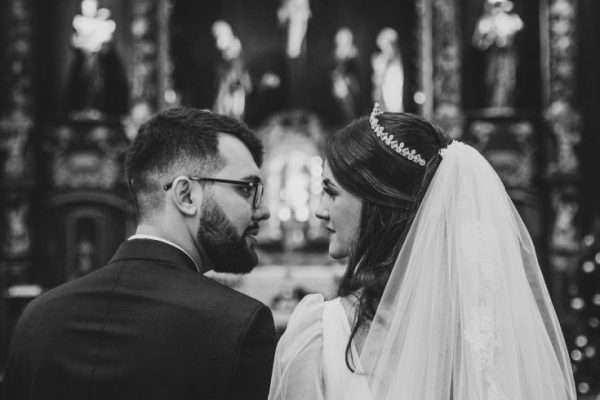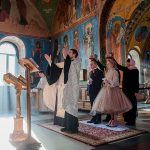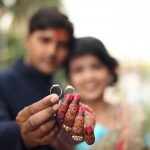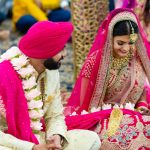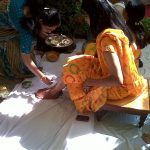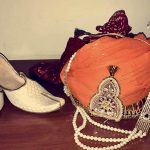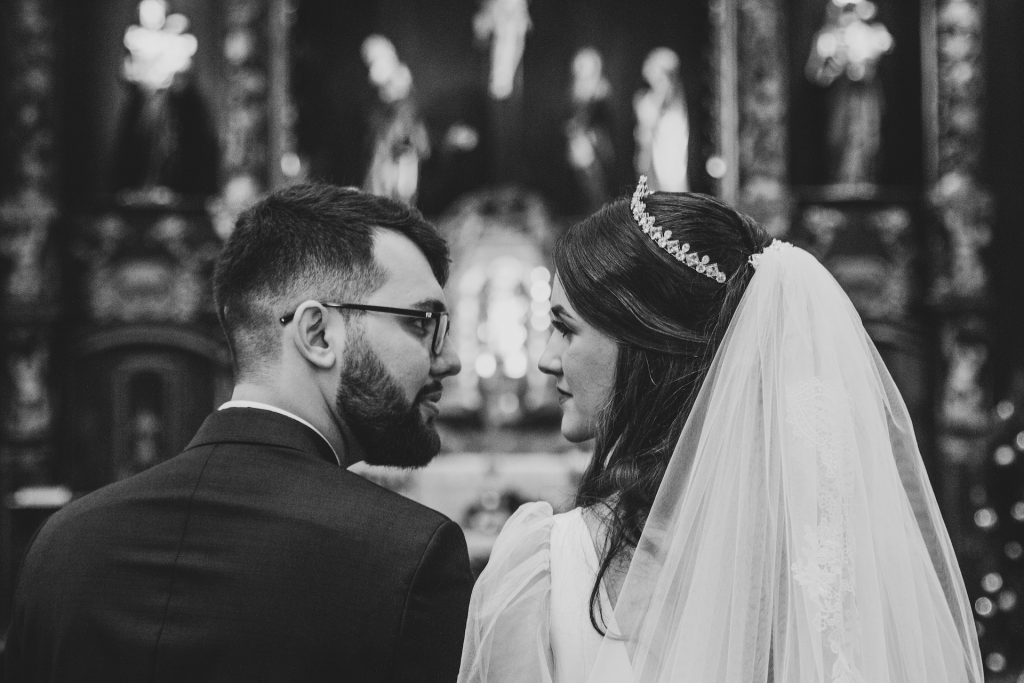
Norway is located in Northern Europe with a rich history and beautiful landscapes. In this Nordic country, you will find many unique Norwegian wedding traditions compared to the other Scandinavian countries. Let’s read up on these Norwegian wedding rituals so that you are prepared when you plan or attend one.
Norwegian Wedding Traditions
Couples have either a civil or a religious ceremony in Norway; both of these ceremonies are considered civil since church and state are one in Norway. A religious ceremony takes place in a church while a civil ceremony takes place at city hall.
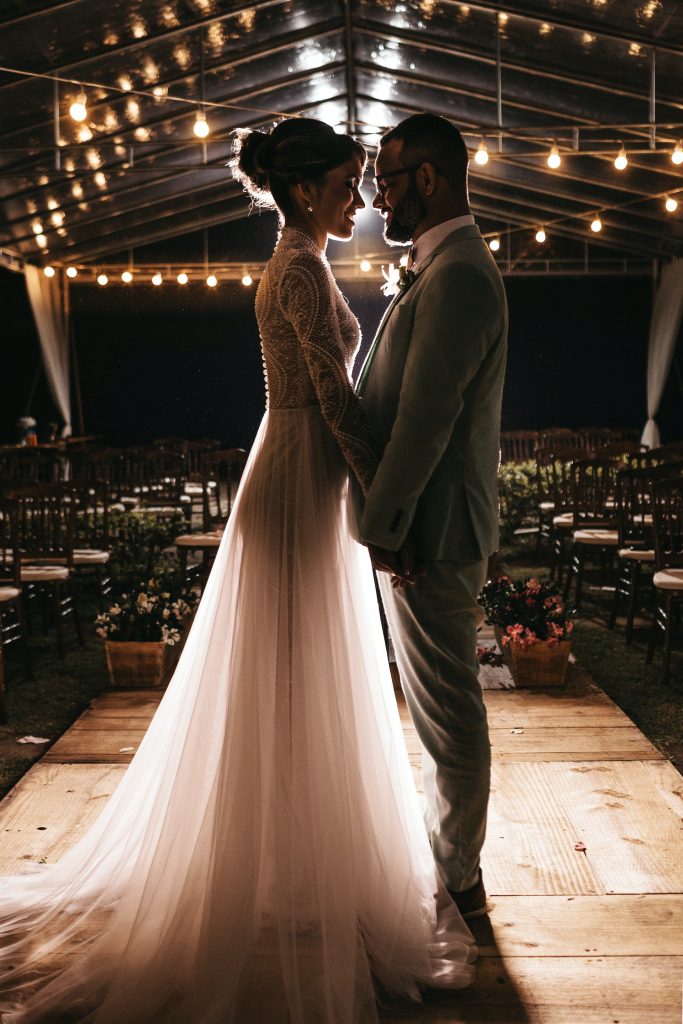
Norwegian Wedding Attire
The groom and the groomsmen wear a Norwegian bunad, a traditional woollen suit. The suit contains silk shorts, short pants, stockings, a vest, and a top coat. It usually has intricate and colourful designs. Guests also wear this bunad for weddings and other important events.
The bride wears a silver or white Norwegian wedding dress with a wedding crown. The bridesmaids also wear a dress similar to the bride; this is done to protect the bride so that evil spirits will be confused and forced to leave, thereby not ruining the wedding. The bride also has the choice of the dress version of the traditional bunad.
Norwegian Wedding Crown
The bridal wedding crown is called a brudekrone; these crowns are usually a family heirloom that the bride wears along with her traditional Norwegian wedding dress on the wedding day. A veil is attached to the crown and this ensemble is meant to symbolize the bride’s purity and the Virgin Mary. The crown is decorated with spoon-shaped bangles which make sounds when the bride walks. This noise is to ward off any evil spirits lurking around so that it is a happy wedding day.
Norwegian Wedding Rings
Like most weddings in the West, Norwegian couples exchange rings during their wedding. An engagement ring is placed on the left hand of the bride and groom while wedding rings are placed on the right hand.
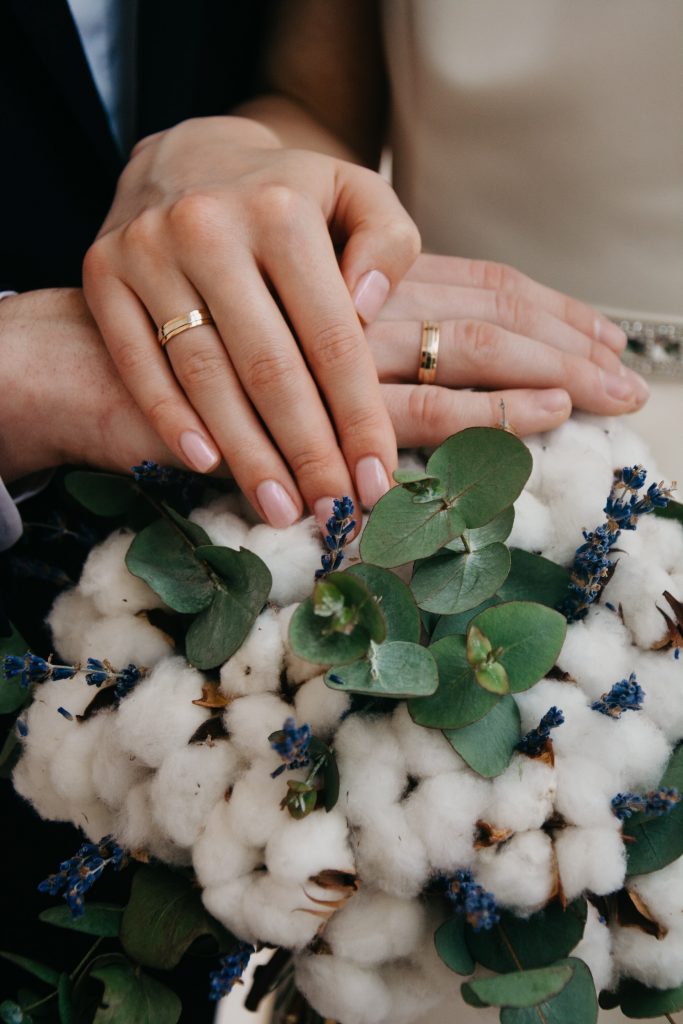
Traditional Norwegian Wedding Procession
A Norwegian wedding ceremony begins with a procession. The procession is accompanied by music played on Norwegian wedding fiddle and violins on the way to the church or city hall. Behind the musicians, the bride and groom follow. After the couple, the parents, bridesmaids, ring bearers, flower girls and guests enter the wedding venue. Everybody follows the musicians down the aisle and takes their places.

Norwegian Wedding Blessing
One curious wedding blessing involves rye and barley grains. Guests throw rye and barley grains at the couple once they are married. The bride tries to grab as many grains as possible. The more grains she collects, the brighter future the bride and the groom will have.
Norwegian Wedding Cake
A wedding cake is an extremely common part of the wedding reception. A traditional wedding cake in Norway is either a blotkake or a Kransekake. A blotkake is a sponge cake which is filled with cream and topped with icing and fruits. A Kransekake is a tower cake with almond rings stacked in layers creating a pyramid. During modern weddings, the couple may also choose a cheesecake or chocolate cake.
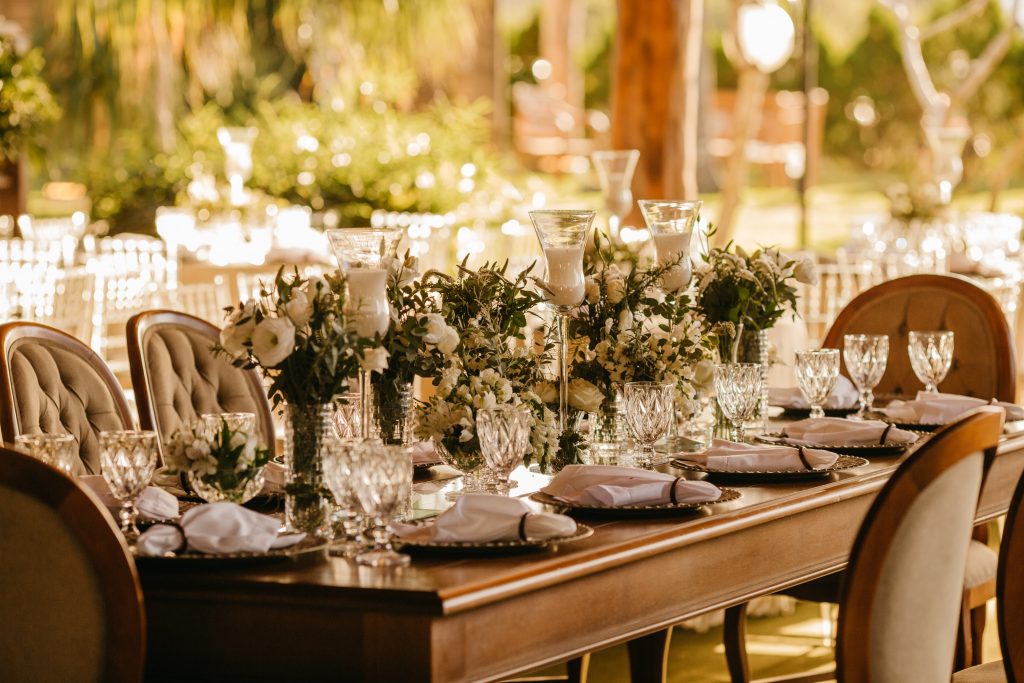
Norwegian Wedding Toasts and Speeches
After the Norwegian wedding vows and ceremony, it is time for the wedding reception. Everybody enjoys a delicious dinner along with fun speeches and toasts. For the toast, there is a toastmaster and this person introduces everyone who wants to give a speech and moves the speeches along in an orderly fashion. Anybody can make a speech but traditionally, the bride’s father, the bride, the groom, the principal bridesmaid, the best man, and the groom’s father give speeches. The speeches are spaced out throughout the dinner and not all at once.
Sometimes wedding receptions go on for a long time. In that case, a late-night menu called the nattmat is offered to the guests so they don’t go hungry into the late hours of the night.
Norwegian Wedding Music
Music is an important part of Norwegian wedding customs. As mentioned above, music is played as the wedding procession goes into the ceremony venue. After the ceremony, the couple leaves the venue as music is being played on an accordion. “Come to the Wedding” is one such song played during this time. During the wedding reception, music is once again played and everybody dances. The dancing begins first with the newlyweds having their first official dance as a married couple.
Norwegian Wedding Kissing Traditions
This is a fun wedding custom. During the wedding reception, if the groom goes to the bathroom, the male guests use this opportunity to kiss the bride. But, if the bride goes to the bathroom, then all the female guests will kiss the groom.
If any one of the guests clinks a wine glass with silverware, then the bride and groom must kiss while standing on their chairs. If the guests stomp their feet, then the bride and groom kiss each other under the table.
Wedding Spoons
If you see awedding in Norwegian style, then you might have heard about this ancient wedding tradition. On the third day of the wedding festivities, the bride and groom would eat a meal with wooden wedding spoons that are linked together by a chain. As Norwegian wedding gifts go, these wooden spoons are symbolic of the wonderful bond between the newlywed couple. After using them, the spoons are hung over their couple’s door as a good luck charm.
Planting Fir Trees
Once the newlywed couple has moved into their new house, sometimes they will plant fir trees on each side of the front door. These trees symbolize the children the couple plans to have.
Norwegian Wedding Traditions/Customs
Norway has wonderful traditions when it comes to celebrations. So, of course, weddings are filled with fun traditions which showcase Norway’s rich history. From wedding crowns, fiddle players, songs played on accordions to stealing kisses, Norwegian weddings are extremely fun to take part in or witness. Weddings normally take place in a church or city hall and are attended by the couple’s family members and close friends. So, if you are planning a simple wedding ceremony or a Norwegian cruise wedding, you and your guests will enjoy themselves.




